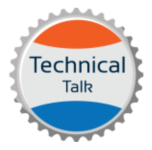To begin with, the dynamic and ever-evolving realm of technology, the evolution of programming languages serves as a compelling testament to the unwavering pursuit of efficiency, expressiveness, and adaptability. Moreover, spanning from the nascent days of assembly languages to the present era dominated by high-level languages. This article embarks on a captivating exploration of the intricate journey undertaken by programming languages. These languages, like linguistic tools for digital expression, have played a pivotal role in shaping the expansive and intricate digital landscape we navigate today. From the foundational simplicity of early languages to the sophistication of contemporary high-level counterparts, the evolution reflects not only technological progress but also the changing needs and ambitions of developers worldwide. As we delve into this narrative, it becomes evident that programming languages are not merely tools; they are dynamic entities that mirror the pulse of technological advancement.

The Dawn of Assembly Languages
The roots of programming languages trace back to the inception of assembly languages, a pivotal era where developers communicated directly with a computer’s hardware. In this foundational stage, low-level languages served as the crucial intermediary, acting as a bridge between machine code — the binary language understood by computers — and human-readable instructions. Assembly languages allowed programmers to use mnemonic codes representing specific machine instructions, making the process more accessible and efficient. This early evolution marked a transformative step in computing, laying the groundwork for more sophisticated language development. The transition from raw machine code to assembly languages not only simplified programming tasks but also facilitated a higher level of abstraction. This crucial development set the stage for the subsequent emergence of high-level programming languages, opening new horizons for software development and shaping the trajectory of computing history.
Object-Oriented Revolution with C++ and Java
Furthermore, the late 20th century witnessed a profound paradigm shift in the world of programming with the advent of object-oriented programming (OOP). This transformative concept was heralded by C++, a language that introduced the fusion of procedural and object-oriented approaches. C++ enabled developers to create modular and reusable code, fostering a more efficient and scalable programming paradigm. Java, arriving on the scene shortly after C++, played a pivotal role in popularizing and solidifying the principles of OOP. Java’s “write once, run anywhere” philosophy enhanced code portability across diverse platforms, making it a cornerstone for web development. This versatility made Java a preferred language for creating dynamic and interactive applications on the internet. The introduction and widespread adoption of OOP during this era marked a significant leap forward in software development, emphasizing modularity, code reusability, and a more intuitive approach to problem-solving.
Web Development Boom and JavaScript
More over, the internet explosion in the late 20th century sparked an unprecedented demand for dynamic and interactive web applications. In response to this paradigm shift, JavaScript emerged as the go-to language for front-end development, revolutionizing the way user interfaces were crafted. With JavaScript, developers gained the ability to create responsive and engaging interfaces, enhancing the overall user experience on websites. JavaScript’s versatility transcended front-end development, paving the way for the advent of full-stack JavaScript development. This transformative evolution was catalyzed by the introduction of Node.js, a server-side runtime environment. Node.js enabled developers to utilize JavaScript for back-end development, unifying the language across the entire web development stack. The rise of full-stack JavaScript marked a pivotal moment in web development, streamlining the development process and fostering a more cohesive and efficient approach to building scalable and feature-rich web applications.
Conclusion
In conclusion, the evolution of programming languages is a rich tapestry reflecting the technological advancements and shifting priorities of the computing world. Additionally, from the low-level intricacies of assembly languages to the high-level abstractions of modern scripting languages, each phase in this journey has contributed to the efficiency and expressiveness of code. As we navigate the complexities of contemporary programming, the evolution of languages remains a dynamic and ongoing process, adapting to the evolving landscape of technology and continuously influencing how we interact with and harness the power of computers.

